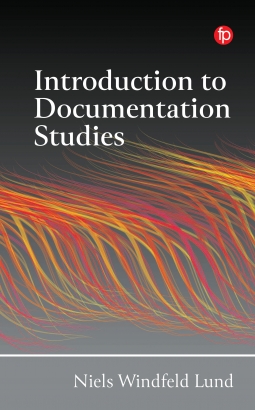
Primary tabs
You don't need to be an ALA Member to purchase from the ALA Store, but you'll be asked to create an online account/profile during the checkout to proceed. This Web Account is for both Members and non-Members. Note that your ALA Member discount will be applied at the final step of the checkout process.
If you are Tax-Exempt, please verify that your account is currently set up as exempt before placing your order, as our new fulfillment center will need current documentation. Learn how to verify here.
- Description
- Table of Contents
- About the author
- Reviews
This book presents the first comprehensive introduction to documentation studies. It outlines the historical background of, and the theoretical foundation for a complementary approach to documentation issues and processes: not only in the context of academic study, but also in the practice of documentation in different parts of society.
What do a composer, a writer, a painter, a historian, a political activist, and a social agency office have in common? They all create documents to communicate and inform the world, making documentation a necessity for any human interaction in society. Through six case studies, the book shows how a complementary analysis of the intertwined processes of documentation, communication, and information in any kind of human interaction can be conducted. It demonstrates the relationships between the agents involved and the means chosen, and in which modes the resulting complexes of documents are created, regardless of the field.
The complementary analytical model and method is relevant not only for documentation, communication, and information scholars, but to a range of fields of research in humanities, social sciences and natural sciences/engineering and design.
Written by an expert in documentation, this book provides a solid theoretical and analytical framework for professionals in archives, libraries, and museums, and for all those who manage documents as part of their professional life in healthcare, transportation, education, production, and trade.
LIS instructors may request an e-Inspection copy from Facet Publishing.
Introduction
Part 1: DOCUMENTATION THEORY
1 Setting the Stage
2 A Complementary Theory of Documentation
3 A Model for a Complementary Documentation Analysis
Part 2: DOCUMENTATION IN PRACTICE
4 Music: A Requiem for Countess von Walsegg, aka Mozart's Requiem
5 Literature: "Indian Camp" - A Short Story by Ernest Hemingway
6 Art: The Girls on the Bridge - One Title - Many works
7 Science: "The Danish Revolution 1500-1800" - A Doctoral dissertation
8 Politics: The March on Washington for Jobs and Freedom August 28, 1963
9 Identity Documentation: Name and number
Part 3: DOCUMENTATION IN THEORY AND PRACTICE
10: Documentation in a comparative perspective
11: A complementary discipline of documentation, information, and communication
Epilogue
Niels Windfeld Lund
Niels Windfeld Lund became the first employee and full professor in Documentation Studies at the Department of Documentation Studies, University of Tromsø, Norway. Dr. Lund was Associate Professor at the Royal School of Library and Information Science in Denmark and has twice been Visiting Professor at the University of California, Berkeley. In 2001 Dr. Lund founded The Document Academy, an international network for Documentation studies organizing annual DOCAM conferences around the world. He is still active as Professor Emeritus, participating in research projects.
Have you read this book? Leave a review!
Praise for the book
"A timely and important contribution to a flourishing scholarly field, Lund’s book on documentation theory aspires to offer a unifying approach to human communication and documentation. Building on key figures in communication and information theory, and elaborating on established concepts in the field as well as adjacent disciplines and traditions, he develops a theory and a model of documentation analysis which has the potential to synthesize the many diverse approaches found in existing theories of documentation and communication. It is historically informed, theoretically solid, and well done—a joy to read."
— Professor Anne Mangen, Norwegian Reading Centre, University of Stavanger, Norway


